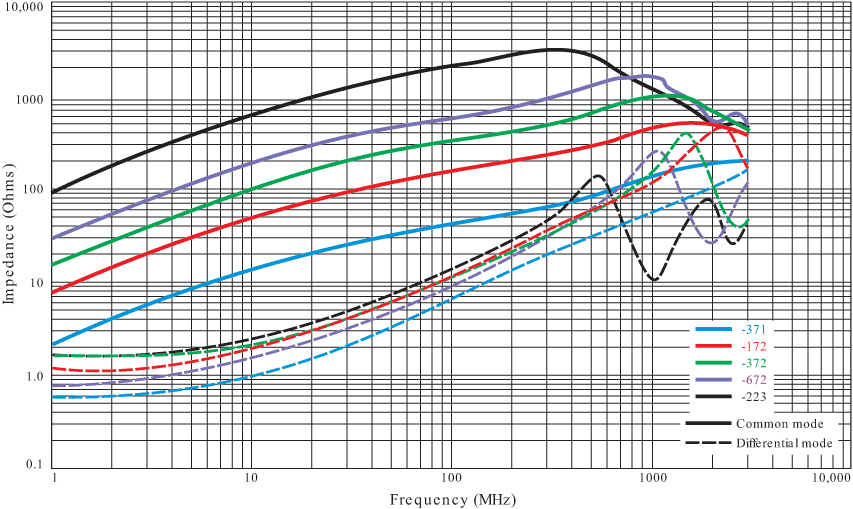
3D Model
Datasheet
Specifications
| Part number 1 | Lines |
Common mode peak impedance (kΩ) |
Cutoff frequency (GHz) 2 |
Common mode attenuation typ (dB) |
Inductance min (nH) 3 |
Irms (mA) | DCR max (Ω) 4 |
Isolation Voltage (Vrms) 5 |
||
|---|---|---|---|---|---|---|---|---|---|---|
| 10 MHz | 100 MHz | 500 MHz | ||||||||
| CP376FRA102MAZ | 2 | 0.36 @ 1900 MHz | 2.2 | 3.81 | 8.97 | 13.32 | 66 | 500 | 0.14 | 250 |
Notes
- When ordering, please specify termination and screening codes: e.g. CP376FRA223MAZ.
- Frequency at which the differential mode attenuation equals −3 dB.
- Inductance measured at 100 MHz using an Agilent/HP 4286A impedance analyzer and a Coilcraft SMD-A fixture.
- DCR is specified per winding.
- Winding to winding isolation (hipot) tested for one minute.
Termination:
- A = Gold over nickel over silver-palladium-glass frit.
- C = Tin-lead over gold over nickel over silver-palladium-glass frit. (Special order, added cost)
- F = Tin-silver-copper over gold over nickel over silver-palladium-glass frit. (Special order, added cost)
Testing:
- Z = Unscreened
- H = Coilcraft CP-SA-10001 Group A
Environmental
Ambient temperature range:
–40°C to +85°C with Irms current.
Storage temperature range:
Component: –55°C to +105°C.
Tape and reel packaging: –40°C to +80°C.
Tape and reel packaging: –40°C to +80°C.
Maximum part temperature:
+105°C (ambient + temp rise).
Failures in Time (FIT) / Mean Time Between Failures (MTBF):
Performance curves
Typical Attenuation

Impedance vs Frequency

Schematics

General specification
Core Material:
Ferrite
Weight:
36.2 – 37.6 mg
Packaging:
2000 per 7″reel; Plastic tape: 8 mm wide, 0.3 mm thick, 4 mm pocket spacing, 1.9 mm pocket depth.
Soldering/Washing
Moisture Sensitivity Level (MSL):
1 (unlimited floor life at <30°C / 85% relative humidity).
Resistance to soldering heat:
Max three 40 second reflows at +260°C, parts cooled to room temperature between cycles.
Refer to Soldering Coilcraft Components before soldering.

